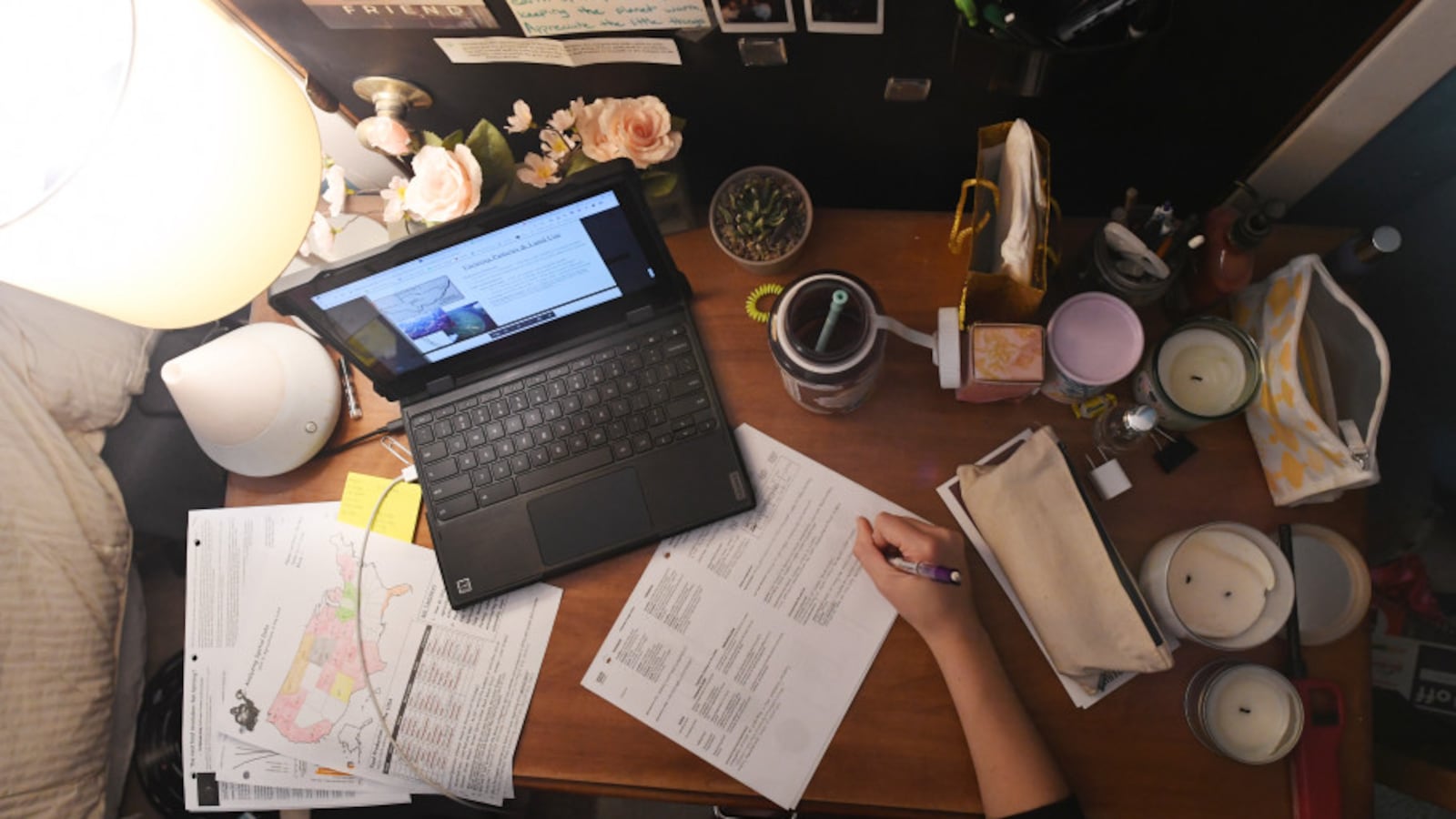Denver Public Schools is gearing up to launch virtual training for teachers to help shift instruction online. New York is handing out 300,000 computers, with about 175,000 distributed so far.
Until now, Chicago Public Schools has been largely mum about the district’s plans to ramp up remote learning — though officials promised more details later this week.
The district’s governing board on Wednesday unanimously approved $75 million for the coronavirus response, allowing leaders to sign contracts and make purchases without prior board approval through June. District officials said they need the flexibility to spend on cleaning schools, providing school meals, paying frontline staff — and filling gaps in student access to computers and the internet.
“We are committed to doing whatever we can to bridge the digital divide,” said the district’s Chief Education Officer LaTanya McDade. “Our teams have been working day and night to develop new strategies for our students to continue their education.”
District CEO Janice Jackson said the district needs to move quickly because of a significant backlog as districts and other groups across the country have rushed to order digital devices.
Profound income disparities among its students and the size of the district pose a challenge as Chicago seeks to roll out an effective and equitable e-learning strategy, which requires educator training, added tech support, resources for diverse and English learners and more. With the possibility that schools could remain shuttered through June, it is also increasingly a necessary effort to keep learning on track for roughly 300,000 students.
Some educators told Chalkbeat this week that they are eager to help their students keep up their academic momentum remotely but need more guidance and support. The Chicago Teachers Union has called on the district to prioritize addressing disparities in student access to technology.
Wednesday’s regular monthly board meeting heralded an unprecedented shift to technology: It was the first held solely via videoconference, with as many as 1,200 viewers tuning in at times.
There were small connectivity glitches, and board Vice President Sendhil Revuluri’s young daughter made a short unscheduled appearance, but the meeting otherwise ran smoothly. The board did significantly restrict the time allowed for public comment.
School board members pressed district leaders for details about remote learning. Top officials largely demurred, saying that they are awaiting state guidance, but promised to share more later.
Jackson said the district has been working to survey families and identify areas with the highest technology needs. She said the district has started ordering additional devices and will soon release the criteria for distributing them to families to ensure those who need them most get them first.
She acknowledged the district is facing a device backlog.
“We are getting in line as quickly as possible,” she said. “Our ability to move quickly and nimbly is critically important.”
Jackson said the district plans to leverage contributions from donors and businesses, and suggested some have already stepped up but did not provide details.
Officials said they hope federal aid will offset at least some of the technology costs and stressed that the district might not spend the entire $75 million the board authorized.
Before the meeting, Jennifer Johnson, the Chicago Teachers Union’s chief of staff, said union leaders have tried to engage the district on addressing prolonged closures.
“I can’t say that I feel there is a comprehensive plan that’s going to get us equity,” Johnson said. “That’s going to be incredibly challenging.”
The state Board of Education has been seeking input from educators as it works on crafting guidelines for the district. Johnson said the need for training has come up repeatedly. She believes Chicago and the state should tap the expertise and ideas of some of their educators rather than leaning on commercial vendors for training.
“This is not going to be the same as school in person and we shouldn’t pretend it could be,” Johnson said.
Some Chicago educators said they are hungry for direction to continue teaching and helping students long distance. They said they are impatient to see students get their hands on devices.
“Whatever conversations are happening are happening on the administrative end,” said A. Jene Young, a special education classroom assistant at Sherman School of Excellence.
She said her small school could provide a device to each of its students, but it grapples with concerns about the possibility of damaged and lost devices.
District spokeswoman Emily Bolton said the new guidelines the district is working on will clarify strategies for remote learning as well as different platforms and resources for engaging students.
“Many schools are currently engaging students in coursework,” she said. “The updated guidance will seek to provide clear information on structure and expectations for student engagement.”

